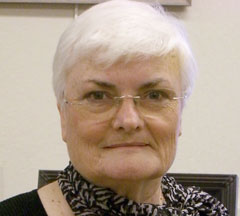When Should I Use Bacterial Analysis of Dust?
By Dr. Harriet Burge, EMLab P&K's Director of Aerobiology
I generally do not recommend bacterial analysis of house dust except in a few unusual situations.
This is because we don't know how to interpret the results. However, we do receive occasional
requests for cultural bacterial analysis of house dust. These analyses are done by dilution
culture and data can be presented as total bacteria, general groupings of bacteria (i.e., Gram
negative, Gram positive, Bacillus), sewage screens (total coliforms, Enterococcus,
etc.) or species identification for the most abundant colonies. Sewage screens usually involve
presence or absence in house dust. Otherwise, interpretation is based on the number of colonies
present per gram of dust, and/or the relative composition of specific bacterial groups or specific
organisms in the dust.
Given that these requests are not rare, it seems appropriate to develop some interpretation
guidelines, at least with respect to average or "usual" populations in house dust.
Unfortunately, few studies have been done documenting concentrations of total culturable
bacteria or of any specific organism or group of organisms. In my experience, these studies
are rarely done because the dynamics of exposure to house dust are not clear, and because dust
is not considered to contain human pathogens (or at least dust is not considered the primary
source for human pathogenic bacteria).
Most of us are using dust analysis not to evaluate exposure, but to discover if water damage or
some other event has led to unusual bacterial growth in dust. This is a legitimate approach
providing you have established in advance a method for interpreting the resultant data. Thus,
here is my general approach.
A recent review of the literature revealed that, in general, concentrations of total bacteria
in excess of 1 million colony forming units (cfu)/gram of dust may represent an unusual situation.
An analysis of the EMLab P&K database led to the same conclusion, with all of the outlier
points being in excess of 1 million bacterial cfu.
Gram negative and Gram positive organisms appear to abundant in all house dust in approximately
equal concentrations, and, again, concentrations above 1 million in either category appear to
represent an unusual situation. This appears to be inconsistent with the total guideline, but
in fact, emphasizes the fact that these populations are logarithmically distributed, and there
is little difference between (for example) 1 and 2 million. Bacillus concentrations are
generally about an order of magnitude lower than the other categories so that concentrations in
excess of about 500,000 cfu/gram of dust may be unusual. In addition, Bacillus species
should not dominate the dust population.
A study of species of culturable bacteria in dust remains to be done. In addition, a study of
bacterial dust populations using PCR (as is done in marine sediment studies) could be extremely
useful. Until these studies are done, I plan to rely on the general guidelines presented here,
with the caution (to myself) that the numbers need to be updated as new research data become
available.
There are also some important cautions with the use of these guidelines. They are based on
content in 1 gram of dust. However, dust that is vacuumed from a bed will largely be skin cells,
fibers, and things that are light. Dust that is vacuumed from the carpet near an entryway will
have more dirt and debris that is heavier. This could greatly swing the reported units. The
location of sample collection will also affect the kinds of bacteria collected. For example,
an entryway sample may reflect tracked in dirt, while a bed dust sample should be dominated by
skin surface bacteria. The presence of pets may also affect both concentrations and population
patterns. Finally, always remember that this data is just one piece of information, one clue.
As always, visual and sensory inspections are the most important and are a part of ALL
investigations. Samples need only be collected when they are necessary to answer specific
questions.
This article originally appeared in the August 2010 issue of Indoor Environment Connections.
Reprinted by permission.
 |
|
About Dr. Harriet Burge
Dr. Harriet Burge is EMlab P&K's Director of Aerobiology and Chair of EMLab P&K's
Scientific Advisory Board. Widely considered the leading expert in indoor air quality (IAQ),
Dr. Burge pioneered the field more than 30 years ago. She has served as a member of three
National Academy of Sciences committees for IAQ, including as Vice-Chair of the Committee
on the Health Effects of Indoor Allergens. View Dr. Burge's Curriculum Vitae.
Read "Ask Dr. Burge" articles
|